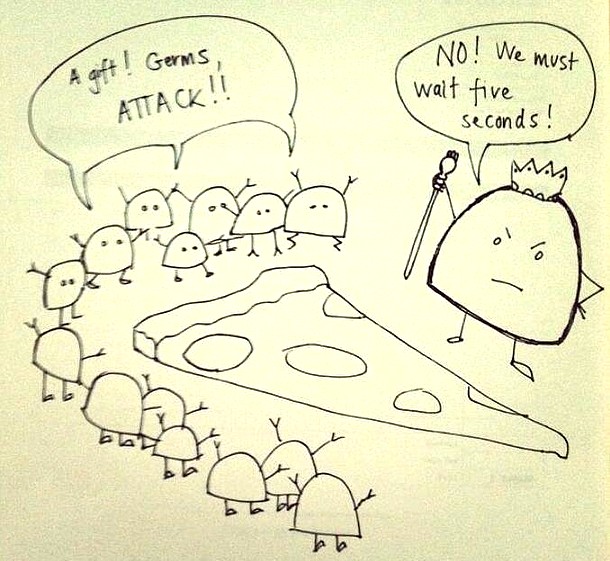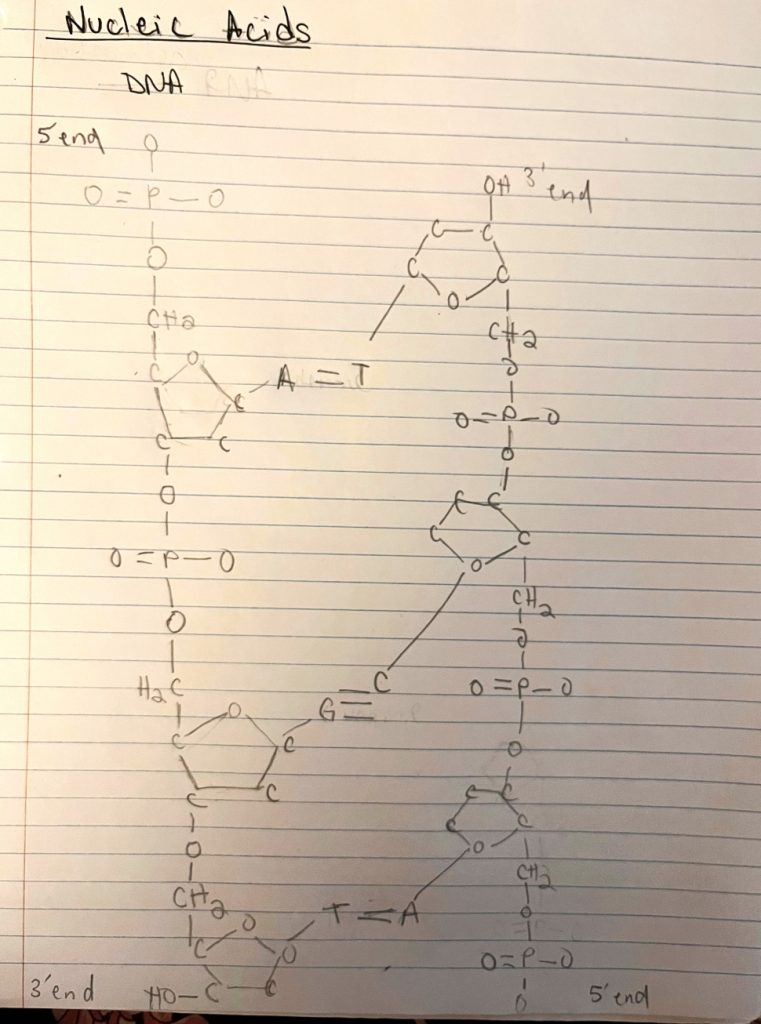Assignment: Draw me a cell

Assignment: Find me a meme

Assignment: Draw me a biomolecule

Assignment: Scientific Data Analysis
The heart.
We tend to say love you with all my heart and I’m not sure where that notion comes from. Seems nonsensical. However, I do agree with the fact that it gives the heart much importance. As an organ, the heart is a machine that pumps blood throughout the body, providing other organs with rich, oxygenated blood. Even before birth, the heart is at work. Day after day, the heart pumps blood, nonstop. What happens if the heart stops beating?
Cardiac arrest is when the heart suddenly and unexpectedly stops beating. When the heart stops beating blood cannot properly circulate around the body. This means that blood flow to the brain and other organs is decreased. Once the brain does not receive enough blood, this can cause a person to lose consciousness and brain cells can start to die due to lack of oxygen. According to Wikipedia, 13 per 10,000 people per year suffer from cardiac arrest. As a percentage, that is equal to 0.13% of the population in the US. Additionally, there are an estimated 425,000 deaths per year due to cardiac arrest.
Some interesting facts to consider: Cardiac arrest becomes more common with age; it affects males more often than females; black people are twice as likely to die from cardiac arrest as white people; Asian and Hispanic people are not as frequently affected as white people (Wikipedia, 2025). However, the risk factors associated with cardiac arrest are not limited to race. The following is a list of the most common risk factors, although there are many other factors which may impact them as well:
- cigarette smoking
- high blood pressure
- high cholesterol
- lack of physical exercise,
- obesity
- diabetes
- family history
- alcohol use
The heart is part of the circulatory system, which also includes arteries and veins. Arteries and veins are the pathways in which blood travels from and back to the heart. A search in Wikipedia and we learn that ischemia is a restriction in blood supply to any tissue, muscle group, or organ of the body, causing a shortage of oxygen that is needed to keep tissue alive. Ischemia and reperfusion is a pathological condition characterized by an initial restriction of blood supply to an organ followed by the subsequent restoration of perfusion and concomitant reoxygenation…cardiac arrest and other forms of trauma are associated with ischemia of multiple organs and subsequent reperfusion injury when blood flow is restored (Eltzschig & Eckle, 2011). Lack of oxygen brings about cell death. Mitochondrial damage is a critical contributor to cardiac ischemia/reperfusion (I/R) injury (Wang & Zhou, 2020).
As one of the most complex and important organelles within eukaryotic cells, mitochondria provide essential energy for cell activities. (Liu et al., 2021). Research shows intercellular transport of mitochondria, defined as horizontal mitochondrial transfer, can occur in mammalian cells both in vitro and in vivo, and in physiological and pathological conditions (Valenti et al., 2021). What does it suggest about mitochondrial transplant? Their signaling role can extend to intercellular communication, showing that the mitochondrial genome and even entire mitochondria are indeed mobile and can mediate the transfer of information between cells.
Mitochondrial transplantation is an emerging but poorly understood technology with the potential to mitigate severe ischemia–reperfusion injuries after cardiac arrest (Hayashida et al.,2023). In Exogenous mitochondrial transplantation improves survival and neurological outcomes after resuscitation from cardiac arrest, an article published in BMC Medicine, data is presented to support the hypothesis that mitochondrial transplant can improve outcomes after cardiac arrest resuscitation. Let’s explore the results.
The research team used co-cultured exogenous mitochondria extracted from the brain or muscle tissues of donor rats with neural cell cultures to determine whether donor mitochondria can be taken up into neurons. The results, as seen in Figure 1, suggest that exogenous brain- and muscle-derived mitochondria can be efficiently transferred into neural cells.
Once the team confirmed that mitochondria can be successfully transplanted, they went on to test if mitochondria does increase survival in cardiac arrest rats. The results? They found that mitochondrial transplant performed immediately after resuscitation from cardiac arrest improved survival and neurological recovery in rats. Mitochondrial transplant was associated with rapid recovery of lactate, pH, and glucose levels; improved microcirculation and cerebral perfusion; and decreased lung injury.
- Neurological recovery– dramatic increase in neurologically intact survival when post-cardiac arrest rats were treated with infused freshly isolated mitochondria compared to the two control conditions
- Blood lactate– the significant reduction of arterial lactate levels observed in post-CA rats within 15 min of resuscitation in the fresh-mitochondria group compared to the higher lactate levels observed in the vehicle and frozen-thawed groups.
- Lung edema– assessed pulmonary edema at 72 h after resuscitation by measuring the water content of the lung, which was markedly lower in the fresh-mitochondria group (W/D, 4.23 ± 0.85) relative to that in the vehicle (5.70 ± 0.75, P = 0.027) and frozen-thawed (6.21 ± 1.40, P = 0.003) groups
- Blood pH– observed higher arterial pH at 15 min
- CO2 levels– lower arterial partial pressure of carbon dioxide in the fresh-mitochondria group compared with the vehicle and frozen-thawed groups
- Glucose—levels are typically quite elevated in animals immediately after cardiac arrest, were lower after 15 min in animals subjected to mitochondrial transplant compared with the other groups
Do the mitochondria persist in the tissues? Yes! According to the results, follow-up in vivo studies determined that intravenously infused transplanted donor mitochondria can be found in tissues 24 h after cardia arrest. An interesting experiment control used during research testing was frozen-thawed mitochondria. According to the results, these frozen-thawed mitochondria did not have any of the protective effects seen with freshly isolated mitochondria. Therefore, frozen-thawed mitochondria would be ineffective to treat cardiac arrest rats. All in all, mitochondria transplant shows it does provide benefits when used post-cardiac arrest on rats. The beneficial effects on survival were associated with improvements in rapid recovery of arterial lactate and glucose levels, cerebral microcirculation, lung edema, and neurological function.
References:
Eltzschig H. K., & Eckle T. (2011). Ischemia and reperfusion—from mechanism to translation. Nature Medicine, 17(11), 1391-1401. 10.1038/nm.2507
Hayashida, Kei, et al. “Exogenous Mitochondrial Transplantation Improves Survival and Neurological Outcomes after Resuscitation from Cardiac Arrest.” BMC Medicine, vol. 21, no. 1, 2023, pp. 56–56, https://doi.org/10.1186/s12916-023-02759-0.
Liu D., Gao Y., Liu J., Huang Y., Yin J., Feng Y., Shi L., Meloni B. P., Zhang C., Zheng M., & Gao J. (2021). Intercellular mitochondrial transfer as a means of tissue revitalization. Signal Transduction and Targeted Therapy, 6(1), Page. 10.1038/s41392-020-00440-z
Valenti D., Vacca R. A., Moro L., & Atlante A. (2021). Mitochondria Can Cross Cell Boundaries: An Overview of the Biological Relevance, Pathophysiological Implications and Therapeutic Perspectives of Intercellular Mitochondrial Transfer. International Journal of Molecular Sciences, 22(15), 8312. 10.3390/ijms22158312 Wang J., & Zhou H. (2020). Mitochondrial quality control mechanisms as molecular targets in cardiac ischemia–reperfusion injury. Acta Pharmaceutica Sinica B, 10(10), 1866-1879. 10.1016/j.apsb.2020.03.004
Assignment: End-of-term reflection
Not going to lie here, I am stuck. The prompt for this assignment: one thing I learned in Cell Biology that applies to my field of interest? How about all of it, is that a good answer!? Because it was all very interesting, complex, and mind-blowing. Honestly, the main reason why a simple answer is not coming to mind is because I have yet to determine which field of study I will go into. How can one tiny little cell perform such complex functions and carry out all processes that make life possible? Without cellular biology there would be no photosynthesis, no digestion, no growth. No life. I was very intrigued by the process of cellular communication and how complex our cells truly are. I am not sure where I will go in my path towards graduation, but I know that the knowledge from this course will surely be beneficial.
